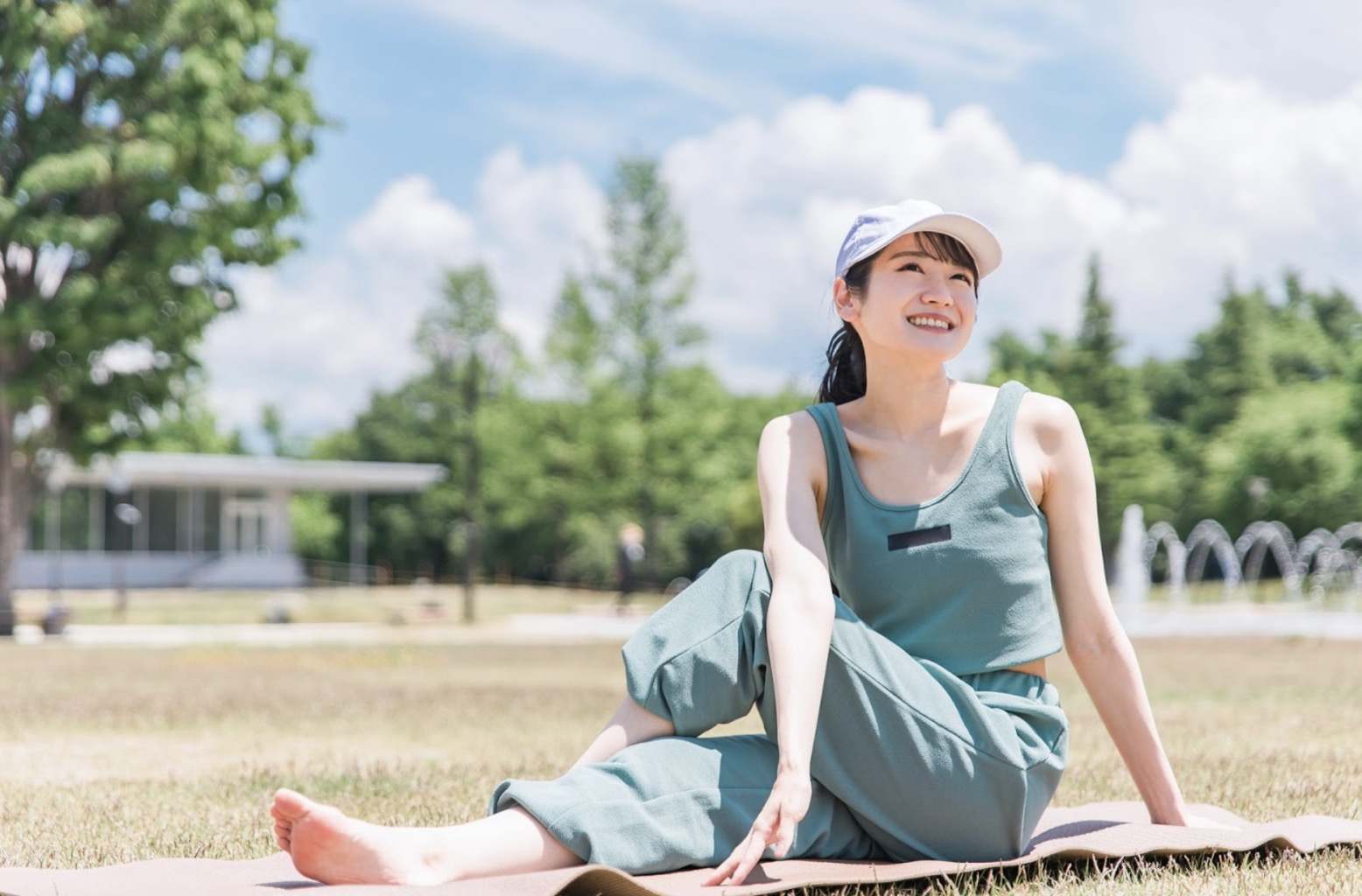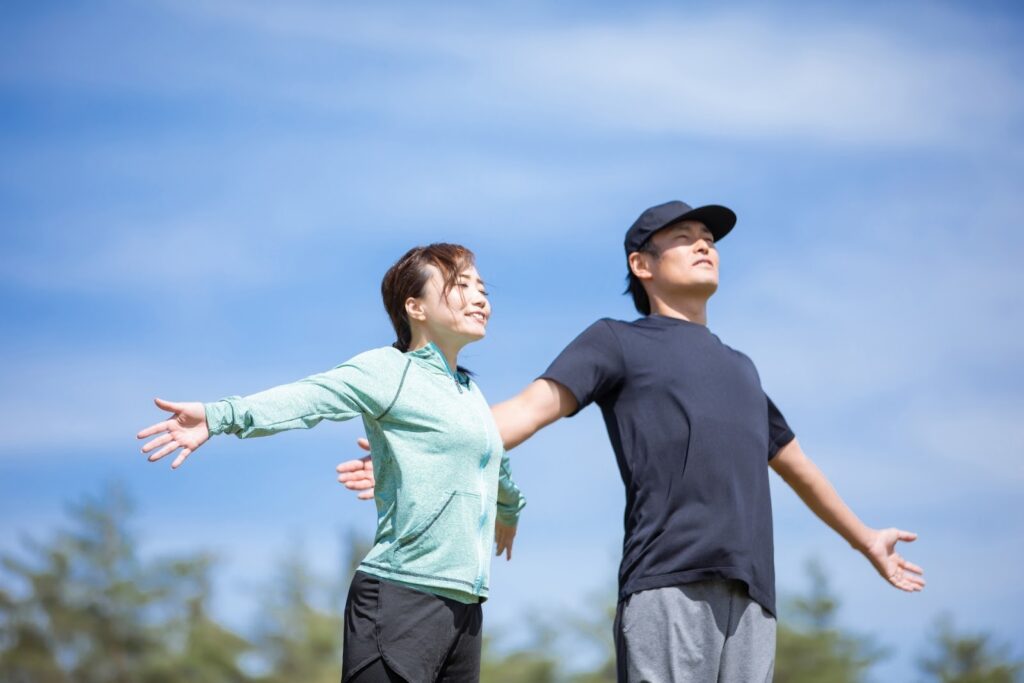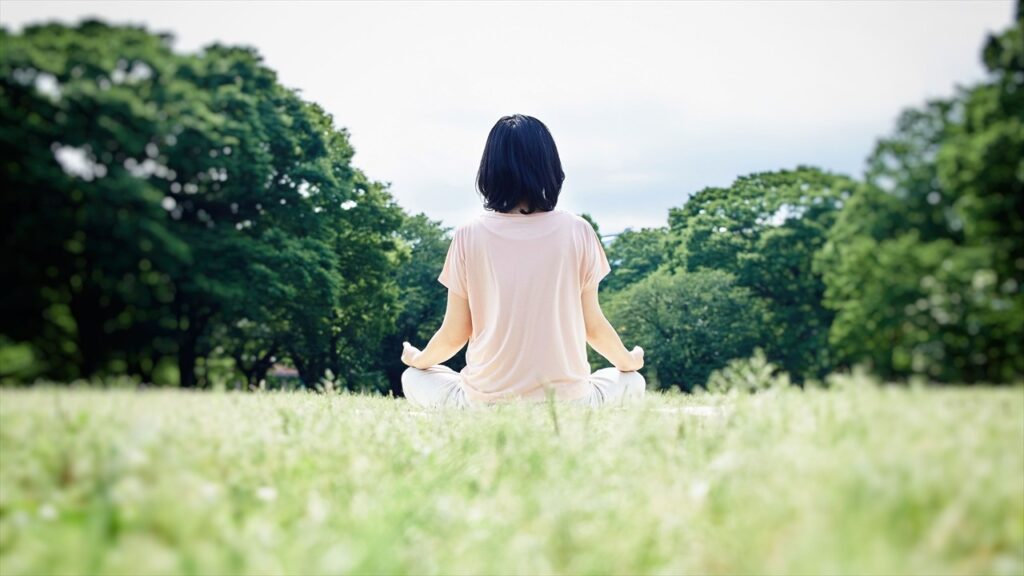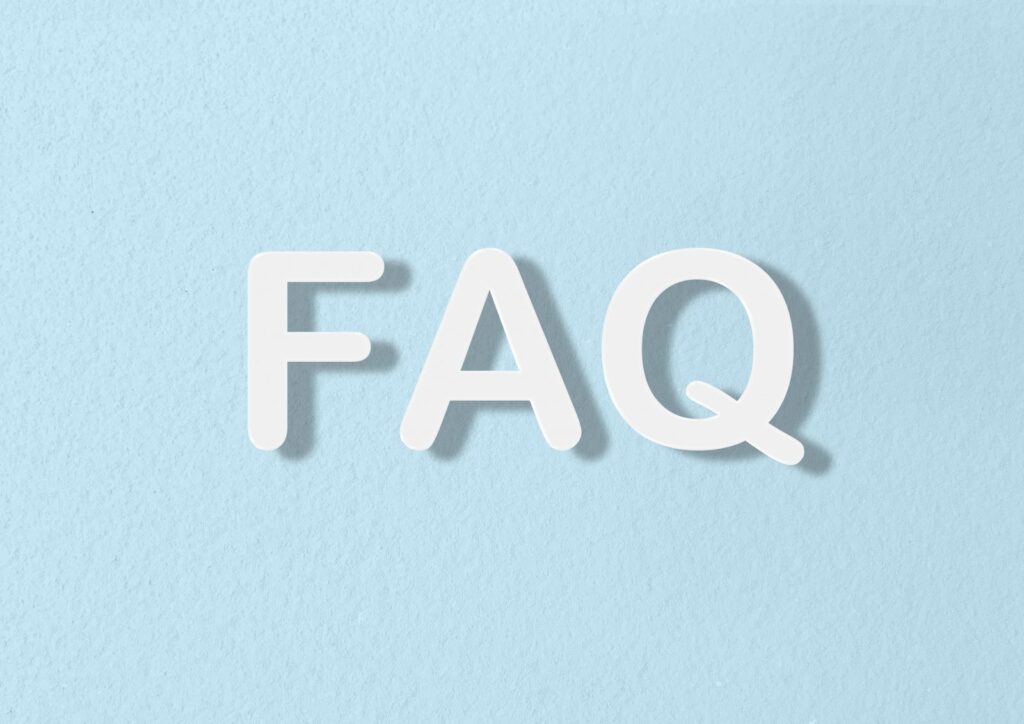Mindfulness Exercise: Daily Practices for Calm and Focus

Quick Summary
Mindfulness exercise helps you find balance, focus, and peace in a fast-paced world. You don’t need hours of meditation or a silent retreat—just a few minutes of attention, breath, and intention. These evidence-based mindfulness exercises are easy to integrate into daily life and supported by modern neuroscience.
- Key Benefits: Reduces stress, anxiety, and mental fatigue
- When to Practice: Morning, midday, or before sleep
- Science Behind It: Backed by research from Harvard Health and Stanford Medicine
- For Beginners: Simple, practical, and safe for anyone
- Try With Gassho App: Daily guided mindfulness, one quiet breath at a time
Introduction
When was the last time you paused without checking your phone? Most of us live in a constant loop of noise—messages, meetings, news, and worries. Our minds race even when our bodies stop. Mindfulness exercise offers a small but radical act: to be where you are. It’s not a luxury; it’s mental hygiene. By taking even one mindful breath, you interrupt the cycle of stress and remember that calm has always been available, hidden just under the next inhale.
What Is a Mindfulness Exercise?
A mindfulness exercise is a short, structured activity designed to train awareness of the present moment. Unlike abstract meditation, it’s experiential—you focus attention on something simple, like your breath or the sensations in your body, and observe them without judgment. You can practice mindfulness exercises while sitting, walking, or even drinking tea. What matters is intention: noticing what’s happening right now. Over time, this repeated awareness strengthens attention networks in the brain and softens habitual stress responses.
How Mindfulness Exercises Affect the Brain

Modern neuroscience continues to confirm what contemplative practitioners sensed centuries ago: mindfulness reshapes the nervous system toward calm and clarity. Research associated with Harvard University has shown that consistent mindfulness practice can lower levels of cortisol, the body’s primary stress hormone. For instance, a meta-analysis on physiological stress markers found that mindfulness-based interventions significantly reduced cortisol levels—both in saliva and in long-term measures such as hair cortisol (Mindfulness-Based Interventions and the Hypothalamic–Pituitary–Adrenal Axis, MDPI). Another randomized study confirmed similar findings, observing decreases in chronic stress indicators following mindfulness training (MDPI Health, 2023). In addition, a study published in Frontiers in Psychology on embodied awareness reported that body-oriented mindfulness practices may enhance emotional regulation and resilience, strengthening one’s ability to recover from stress (Frontiers in Psychology, 2024). Meanwhile, research from Stanford University School of Medicine has found that slow, controlled breathing directly influences anxiety-related neural circuits, quieting overactive regions such as the amygdala (Frontiers in Human Neuroscience, 2018). In simple terms, mindfulness trains the brain to pause before it panics. Each conscious breath gently rewires the pathways of stress, reminding the body that calm has always been available—right beneath the next inhale.
5 Evidence-Based Mindfulness Exercises You Can Start Today
These short exercises require no equipment—only your attention and a few minutes.
1. Mindful Breathing (1 minute)
Sit comfortably. Inhale slowly through your nose, feeling your lungs expand. Exhale gently, noticing the body’s release. Focus on one breath at a time.
When to use: Any time you feel overwhelmed.
2. Body Scan (3 minutes)
Close your eyes and move awareness from head to toe. Observe tension without trying to change it. This builds body awareness and emotional grounding.
3. Mindful Walking
Walk slowly and feel each step. Notice how your weight shifts, how the air feels, and how your surroundings sound.
4. Five Senses Awareness
Pause and name one thing you can see, hear, touch, taste, and smell. This simple grounding practice brings you back from mental drift.
5. Setting an Intention (Wise Intention Practice)
Before you start the day, ask: “Why am I practicing?” Choose an intention—kindness, patience, focus—and carry it through your actions. More guidance can be found in the Acting with Intention Exercise.
Each of these mindfulness exercises strengthens concentration and emotional balance. Regular practice—even just a few minutes a day—can improve sleep, ease anxiety, and nurture compassion toward yourself and others.
The Science of Being: Deepening Your Mindfulness Practice

Mindfulness is not only about noticing—it’s about how you are in each moment. When you reconnect with your deeper way of being, the brain’s networks of reward and self-regulation begin to synchronize in healthier patterns.
Research in Biomedicines reports that mindfulness training can reshape brain circuits associated with emotion regulation and resilience, enhancing stress recovery and positive affect. Similarly, a meta-analysis published in Springer’s Mindfulness and Emotion Regulation review found that consistent mindfulness practice cultivates stronger emotional balance and flexibility.
Meanwhile, neuroimaging research summarized in The Mindful Brain review (MIT Press, 2024) shows that long-term mindfulness correlates with reduced amygdala reactivity and increased cortical thickness in regions tied to self-awareness.
In practical terms, when you decide why you’re being mindful, your attention becomes steadier and less mechanical. You’re not just noticing your breath—you’re remembering what kind of person you want to be while breathing.
Integrating Mindfulness into Daily Life
Mindfulness doesn’t need a cushion or incense. It fits between moments. Try a one-minute breathing pause before emails, a body scan while waiting for coffee, or sensory awareness during your commute. To make practice effortless, use tools that remind you to slow down. The Gassho app offers short guided sessions based on traditional chants from Koyasan monks. With Gassho, even a single breath becomes a small ritual of presence. Mindfulness exercise is not about perfection—it’s about returning. Every time you remember to breathe consciously, you’ve already succeeded.
Conclusion
Mindfulness exercise teaches the simplest truth: peace isn’t somewhere far away. It’s inside the breath you’re taking now. You don’t have to escape your life to find stillness—you just have to stop, notice, and be here.
Frequently Asked Questions

FAQ 1: What is the purpose of a mindfulness exercise?
Answer: A mindfulness exercise trains present-moment awareness so the mind reacts less automatically to stress. You focus attention on an anchor (breath, body, senses), notice distraction, and gently return. Over time, this repetition strengthens attention and emotion regulation, which can translate to calmer decisions, clearer thinking, and improved well-being in daily life. Mindfulness is not about emptying the mind; it’s about relating to experience with curiosity and less judgment, one moment at a time.
Real Results: A large review in JAMA Internal Medicine found mindfulness programs reduce psychological stress outcomes such as anxiety and depression.
Takeaway: Awareness trains the pause between stimulus and response.
FAQ 2: How long should I practice each session?
Answer: Short sessions work. Many beginners benefit from one to five minutes daily, then extend to 10–20 minutes as it becomes comfortable. The key variable is repetition, not heroic duration. Think “small, often, consistent.” Pair practice with existing routines (after waking, before lunch, before bed) to reduce friction. If you miss a day, simply restart; mindfulness is flexible by design and tolerates imperfect streaks without losing long-term value.
Real Results: Harvard Health reports benefits even with brief daily practice and highlights research where 10 minutes per day improved mood and motivation.
Takeaway: Consistency beats intensity.
FAQ 3: Can mindfulness exercise reduce anxiety?
Answer: Yes. Mindfulness down-regulates physiological arousal and changes how you relate to anxious thoughts. By noticing sensations and breath, you interrupt spirals of worry and cultivate a steadier baseline. It pairs well with breathwork that lengthens exhalations. For clinical anxiety, mindfulness is often used alongside therapy or medication as part of a comprehensive plan supervised by a clinician.
Real Results: An RCT in JAMA Psychiatry found 8-week MBSR was noninferior to escitalopram for anxiety disorders.
Takeaway: Train attention; anxiety has fewer places to hide.
FAQ 4: Does mindfulness exercise help with sleep?
Answer: Mindful breathing, body scan, and gentle sensory awareness can shorten sleep latency and reduce nighttime reactivity. A short pre-bed routine (dim lights, phone down, 3–5 minutes of slow breathing) helps cue parasympathetic “rest-and-digest” responses. If you wake at night, a quiet breath count or body scan can lower arousal without “trying to sleep,” which often backfires.
Real Results: The Sleep Foundation summarizes evidence that mindfulness may improve sleep quality and reduce awakenings.
Takeaway: Calm the body first; sleep follows.
FAQ 5: Do I need prior experience?
Answer: No. Mindfulness exercises are beginner-friendly. Start with one anchor (breath or senses) and brief sessions. What matters is adopting a learning mindset—expect the mind to wander and practice returning. If seated practice feels hard, try mindful walking or a one-minute “arriving” breath before tasks. You can deepen later with longer sessions or retreats if you enjoy it.
Real Results: NCCIH’s overview describes mindfulness as a safe, adaptable practice with evidence for stress reduction across varied populations.
Takeaway: Start small, stay kind, repeat.
FAQ 6: How often should I practice mindfulness exercises?
Answer: Daily is ideal, but even three to four times per week can yield benefits. Habit science suggests tying practice to existing cues (after coffee, before logging into email) and celebrating small wins. Diversity helps adherence—alternate breathing, body scan, and mindful walking so practice stays fresh while training the same core skill of attentive presence.
Real Results: NCCIH notes that regular practice is associated with sustained stress reduction and sleep benefits.
Takeaway: Frequency builds familiarity; familiarity builds calm.
FAQ 7: What’s the best time of day to practice?
Answer: Morning practice often sets a clear tone, midday practice resets attention, and evening practice supports downshifting before sleep. The “best” time is the one you can keep. If mornings are chaotic, try a one-minute breath before opening your inbox. If nights run late, insert a 90-second pause after brushing teeth. Consistent timing lowers decision fatigue.
Real Results: Behavioral recommendations from clinical and educational programs commonly use morning and evening placements; Harvard Health provides practical guidance for integrating daily mindfulness.
Takeaway: Choose a slot you’ll actually meet.
FAQ 8: Are mindfulness exercises religious?
Answer: Modern mindfulness can be practiced completely secularly. While historical roots include Buddhist contemplative traditions, today’s clinical and educational programs teach mindfulness as a skill for attention and stress regulation without religious commitments. You can adapt language and intentions to your own values and culture.
Real Results: NCCIH present mindfulness as a health practice accessible to the general public.
Takeaway: Awareness belongs to everyone.
FAQ 9: Can I do mindfulness at work?
Answer: Yes. Micro-practices fit into breaks and transitions: 60-second breathing before meetings, a two-minute walk noticing footfalls, or a senses reset after difficult calls. Teams can normalize brief pauses to reduce reactivity and improve focus. Protecting tiny moments of recovery can prevent cognitive overload and support better decisions under pressure.
Real Results: A 2020 meta-analysis of workplace mindfulness programs reported improvements in employee well-being across randomized trials.
Takeaway: Short pauses pay productivity dividends.
FAQ 10: What if I get distracted?
Answer: Distraction is the curriculum. The moment you notice you’ve drifted and gently return to your anchor, you are strengthening attention. Labeling (“thinking,” “planning,” “worrying”) can reduce stickiness. Keep the return gentle—force amplifies struggle. Over weeks, many notice more “space” between thoughts and reactions, not because thoughts vanish, but because identification softens.
Real Results: Foundational reviews (JAMA Internal Medicine) link mindfulness training to improved attention and emotion regulation.
Takeaway: Every return is a rep for your attention muscle.
FAQ 11: Can children practice mindfulness exercises?
Answer: Yes, if age-appropriate and playful. Short breathing games, listening bells, and five-senses check-ins help kids notice body cues and name emotions. Schools often integrate these skills to support focus and classroom climate. Parents and teachers modeling brief pauses helps children adopt them naturally.
Real Results: Harvard Gazette reports widespread adoption of school-based mindfulness with positive feedback from families and programs.
Takeaway: Calm can be taught early and lightly.
FAQ 12: Is mindfulness exercise safe during pregnancy?
Answer: Generally yes when gentle and comfortable. Many expectant parents use breathing and body awareness to reduce stress and improve sleep. Choose non-strenuous positions, avoid long breath holds, and consult your clinician if you have complications. Mindfulness is an adjunct for mood support, not a replacement for prenatal care.
Real Results: A systematic review and meta-analysis found prenatal mindfulness programs can reduce stress, anxiety, and depression.
Takeaway: Gentle awareness can support a gentler pregnancy.
FAQ 13: What’s the difference between mindfulness exercise and meditation?
Answer: Meditation is the broader container; mindfulness exercises are short, applied forms you can use anytime (breathing, senses, walking). Many people blend both: brief exercises through the day plus a longer seated session when possible. The common thread is deliberate, non-judgmental attention to present-moment experience.
Real Results: NCCIH distinguishes formal meditation from everyday mindfulness practices and summarizes their evidence; see https://www.nccih.nih.gov/health/meditation-and-mindfulness-effectiveness-and-safety .
Takeaway: Same skill, different formats.
FAQ 14: How quickly will I notice results?
Answer: Some feel calmer after one session; more durable changes usually emerge over weeks. Expect a learning curve—restlessness, boredom, or doubt are normal early on. Treat them as objects of mindfulness rather than problems to fix. Benefits compound with regular repetition and kinder self-talk.
Real Results: According to the Harvard Gazette article “Eight Weeks to a Better Brain,” participants in an eight-week mindfulness training program showed measurable structural changes in the brain, including increased gray-matter density in regions like the hippocampus associated with learning and emotional regulation.
Takeaway: Give it eight weeks; notice the small wins sooner.
FAQ 15: Can mindfulness exercises help with chronic pain?
Answer: Yes, as part of a multimodal plan. Mindfulness changes the relationship to pain—less catastrophizing, more space around sensation—which can reduce perceived intensity and suffering. It’s not an anesthetic, but it can reduce the secondary suffering caused by fear and tension. Pair with clinical guidance for best outcomes.
Real Results: NCCIH summarizes that mindfulness shows more consistent benefits for chronic pain than for acute pain; see 8 Things to Know About Meditation and Mindfulness at https://www.nccih.nih.gov/health/tips/8-things-to-know-about-meditation-and-mindfulness .
Takeaway: Pain may persist, but suffering can soften.
FAQ 16: Do I need an app to practice?
Answer: No, but apps can scaffold habit formation with reminders and guided tracks. If you use one, pick brief sessions (1–10 minutes) and a daily cue. You can also practice without tech: one minute before email, walking between rooms, or pausing at red lights (eyes open, of course).
Real Results: A randomized study published in the Journal of Occupational Health Psychology by the American Psychological Association found that a smartphone-based mindfulness program significantly improved employee well-being and reduced job strain in workplace settings.
Takeaway: Tools help; awareness is always portable.
FAQ 17: What are the scientific benefits?
Answer: Evidence indicates reductions in stress and anxiety, improvements in mood, attention, and sleep, and possible blood-pressure benefits. Effects vary by person and program quality. Mindfulness is not a cure-all, but it’s a reliable skill with a growing evidence base across health and performance domains.
Real Results: Reports from the National Center for Complementary and Integrative Health (NCCIH) and Harvard Health Publishing highlight that mindfulness practices are both safe and effective for reducing stress, improving mood, and enhancing focus across diverse populations.
Takeaway: Broad, modest, and meaningful gains add up.
FAQ 18: Can mindfulness replace therapy or medication?
Answer: No. Mindfulness is a helpful complement, not a substitute, for professional care. For diagnosed conditions, coordinate with a clinician. Many people combine mindfulness with CBT, medication, physical therapy, or sleep interventions. Safety means choosing the right tool for the right job and getting support when needed.
Real Results: A randomized clinical trial published in JAMA Psychiatry found that Mindfulness-Based Stress Reduction (MBSR) was as effective as the antidepressant escitalopram in treating anxiety disorders, indicating it may serve as a viable first-line approach when practiced under clinical guidance.
Takeaway: Pair awareness with appropriate care.
FAQ 19: Why do I lose motivation to practice?
Answer: The brain prefers familiar loops. Start tiny (one minute), link practice to a daily cue, and emphasize identity (“I’m a person who pauses”) over streaks. Vary exercises to prevent boredom. If practice brings up difficult emotions, titrate duration and consider guidance from a teacher or therapist.
Real Results: Behavioral research and guidance from Harvard Health Publishing and the National Center for Complementary and Integrative Health (NCCIH) emphasize that identity-based goals and small, consistent actions are most effective for sustaining a daily mindfulness routine.
Takeaway: Make it easy, obvious, and meaningful.
FAQ 20: How can I keep mindfulness alive in daily life?
Answer: Integrate micro-moments: one mindful breath at thresholds (doors, apps, tasks), five-senses check-ins during commutes, and a two-minute reflection before sleep. Consider adding intention (“show kindness,” “listen fully”) to give practice direction. Use gentle reminders, not pressure. The goal is presence, not perfection.
Real Results: Stanford Medicine reports that controlled breathing practices (e.g., cyclic sighing) can reduce anxiety with just five minutes daily.
Takeaway: Ordinary moments become practice when you notice them.
Related Articles
- American Psychological Association
Provides a concise overview of mindfulness research, including benefits for anxiety, depression, and physical health. - National Center for Complementary and Integrative Health (NCCIH)
A government-backed evidence summary covering safety, effectiveness, and ongoing research in mindfulness practices. - Find Calm Like the Wind: How One Minute of the Google Breathing Exercise Can Expand Inner Stillness
A gentle introduction to Google’s one-minute breathing exercise, shared through personal experience. Learn how a single mindful breath can bring calm and widen the sense of stillness in your everyday life. - Mindfulness Meditation and the Brain: The Science Behind Its Benefits
An easy-to-understand guide to what mindfulness meditation is and how it affects the brain.Combining scientific insights with practical tips, this article helps beginners explore how awareness reshapes the mind.
